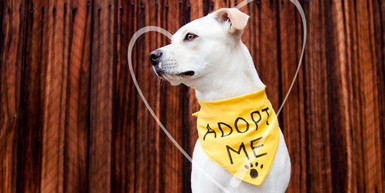Bringing a new pet into your home is an exciting event. It requires preparation to ensure a smooth transition.
Welcoming a new pet involves more than just excitement. Your home needs to be safe and comfortable for your new furry friend. Think of it as baby-proofing, but for pets. You’ll want to create an environment that minimizes risks and maximizes happiness for your new companion.
This means understanding their needs, setting up a designated space, and removing potential hazards. Taking these steps will help your pet adjust quickly and reduce stress for both of you. Ready to make your home pet-friendly? Let’s dive into the essentials.
Also Read

Credit: hastingsvet.com
Choose The Right Pet
Prepare your home for a new pet by creating a safe, comfortable space. Remove hazards and provide cozy bedding. Stock up on essential supplies like food, water bowls, and toys.
Bringing a new pet into your home is an exciting decision. Yet, it is important to choose the right pet to fit your lifestyle. The right pet can bring joy and companionship. The wrong pet can cause stress and problems.Consider Your Lifestyle
Think about your daily routine. Do you work long hours? A dog might get lonely. Maybe a cat or fish is a better fit. Do you love exercise? A dog could be a great workout buddy. Consider your living space. Large pets need more space. Small pets can live in apartments. Think about your family. Do you have young children? Some pets are better with kids than others.Research Different Breeds
Each breed has unique traits. Some dogs need lots of exercise. Others are happy with a short walk. Some cats are very playful. Others are calm and relaxed. Research the lifespan of the pet. Some pets live longer than others. Learn about the grooming needs. Some pets need frequent grooming. Others do not. Research potential health issues. Some breeds are prone to certain diseases. Choosing a healthy breed can save on vet bills. Choosing the right pet involves careful thought. It ensures a happy home for both you and your new friend. “`
Credit: lovingpetsproducts.com
Pet-proof Your Home
Bringing a new pet home is an exciting experience. But it comes with responsibilities. One of the most important steps is pet-proofing your home. This ensures your furry friend stays safe and healthy. Below are key steps to help you pet-proof your home effectively.
Secure Hazardous Items
Start by identifying potential hazards in your home. Common household items can be dangerous for pets. Store cleaning supplies, medications, and chemicals out of reach. Use child-proof locks on cabinets. Secure electrical cords and outlets. Pets love to chew, and exposed wires can be harmful.
Remove small objects that can be swallowed. Coins, buttons, and small toys are choking hazards. Keep them in closed containers. Ensure that plants are non-toxic. Many houseplants can be harmful if ingested. Research pet-friendly plants before bringing any home.
Create Safe Spaces
Designate specific areas for your pet. This helps them feel secure and comfortable. Use baby gates to restrict access to certain rooms. Create a cozy sleeping area. Use a pet bed or crate for this purpose. Ensure it is quiet and away from high traffic areas.
Provide toys and activities to keep your pet entertained. This prevents boredom and destructive behavior. Rotate toys to keep them interesting. Set up a feeding station. Ensure it is clean and accessible. Use non-slip mats under food and water bowls.
Gather Supplies
Preparing your home for a new pet starts with gathering the right supplies. Having everything ready makes your pet’s transition smoother. It also ensures you are well-prepared for their needs. Let’s explore the essential items you should have on hand.
Food And Water Bowls
Choose sturdy food and water bowls. They should be easy to clean. Stainless steel or ceramic bowls are good options. Avoid plastic bowls as they can harbor bacteria. Place the bowls in a quiet area. This helps your pet feel safe while eating and drinking.
Bedding And Toys
Your new pet needs a comfortable place to sleep. Select a soft bed that fits their size. Look for washable bedding to keep it clean. Add a few toys to keep your pet entertained. Toys help with mental stimulation and prevent boredom. Choose toys that are safe and suitable for your pet’s age and size.
Set Up Feeding Stations
Create a designated feeding area with bowls for food and water. Keep the space clean and accessible. Ensure it is a quiet spot for your pet to eat comfortably.
Setting up feeding stations is an important step when preparing your home for a new pet. Proper feeding ensures your pet stays healthy and happy. Create a dedicated space for feeding to keep your home organized and your pet comfortable. This guide will help you choose the right food and establish a feeding schedule.Choose Appropriate Food
Selecting the right food for your new pet is crucial. Different pets have different dietary needs. Research what type of food is best for your pet. For instance, puppies need food with high protein. Kittens require food rich in fats and proteins. Consult your vet for the best recommendations. Read the labels on pet food packages. Make sure the food has the essential nutrients your pet needs. Look for quality ingredients. Avoid food with too many fillers.Establish Feeding Schedule
Consistency is key for a new pet. Establish a feeding schedule early on. Pets thrive on routine. Feed your pet at the same times each day. This helps with digestion. It also prevents overeating. Most pets do well with two meals a day. Puppies and kittens may need more frequent meals. Check with your vet to confirm the best schedule. Place food in the same spot each time. This creates a sense of security for your pet. It also keeps your home clean and organized.Create A Comfortable Sleeping Area
Creating a comfortable sleeping area is crucial for your new pet’s well-being. A cozy and safe sleeping spot helps your pet feel secure and relaxed. This guide will help you set up the perfect sleeping area for your furry friend.
Select The Right Bed
Choosing the right bed for your pet is essential. Here are some tips:
- Size: The bed should be big enough for your pet to stretch out.
- Material: Look for beds made of durable, washable materials.
- Comfort: Opt for a bed with good padding and support.
You might consider different types of beds:
| Type | Description |
|---|---|
| Bolster Beds | Raised edges provide a sense of security. |
| Orthopedic Beds | Great for older pets with joint issues. |
| Heated Beds | Perfect for colder climates or older pets. |
Find A Quiet Location
Pets need a peaceful spot to rest. Consider these factors:
- Away from Noise: Avoid placing the bed near loud appliances or busy areas.
- Temperature: Ensure the location is neither too hot nor too cold.
- Accessibility: Make sure your pet can easily reach the sleeping area.
Create a space that feels safe and serene. A quiet corner of the house is often ideal.
Plan For Exercise And Play
Welcoming a new pet into your home is an exciting time. A crucial part of this process is planning for their exercise and play needs. Pets need regular activity to stay healthy and happy. This section will guide you on how to prepare your home for these needs.
Designate Play Areas
Choose specific areas in your home for play. These areas should be safe and free from hazards. Remove any fragile or dangerous items. Use pet-friendly toys that are safe and durable. Keep these toys in the designated play areas.
For indoor pets, consider using a spare room or a corner of the living room. Outdoor pets may need a secure yard. Ensure the yard is fenced and free from harmful plants or objects. A well-defined play area helps your pet know where they can play freely.
Schedule Regular Exercise
Set aside time each day for exercise. Pets need routine and consistency. Walks, runs, or play sessions should happen at the same times each day. This helps your pet know what to expect and reduces anxiety.
For dogs, daily walks or runs are essential. Cats might enjoy interactive toys or climbing structures. Small pets like hamsters need exercise wheels and tunnels. Regular exercise keeps your pet fit and prevents behavioral problems.
By planning for exercise and play, you ensure a happy, healthy life for your new pet. Designate play areas and schedule regular exercise to meet their needs. Your pet will thank you with love and joy.
Establish House Rules
Bringing a new pet home can be an exciting experience. But, establishing house rules is crucial. It helps your pet understand boundaries and routines. This makes the transition smoother and your home more harmonious.
Define Off-limit Areas
Decide which areas are off-limits to your pet. This could be the kitchen, bedrooms, or certain furniture. Use baby gates or closed doors to keep these areas restricted. Consistency is key. Always enforce these boundaries from day one. This helps your pet understand where they can and cannot go.
Set Boundaries And Routines
Setting boundaries and routines helps your pet feel secure. Create a daily schedule for feeding, walking, and playtime. Stick to this routine as much as possible. This predictability helps your pet adjust to their new home. Establish clear rules for behavior. For example, no jumping on guests or no begging at the table. Consistent training reinforces these rules. Use positive reinforcement to encourage good behavior. Praise and treats work wonders.
Schedule A Veterinary Checkup
Bringing a new pet into your home is a joyful experience. Ensuring your new furry friend is healthy is paramount. Scheduling a veterinary checkup is a crucial step. It helps detect any potential health issues early. This prevents future complications and ensures a long, happy life for your pet.
Find A Local Vet
First, find a reputable local vet. Ask friends and family for recommendations. They can provide trusted insights. Check online reviews too. Look for a vet with a good reputation. Proximity to your home is also important. In emergencies, a nearby vet can be a lifesaver.
Plan For Vaccinations And Checkups
Next, plan for regular vaccinations. Vaccines protect your pet from various diseases. Schedule the first set of shots as per the vet’s advice. Regular checkups are equally important. They help monitor your pet’s growth and health. Schedule these visits every six months. This keeps your pet’s health in check.

Credit: www.missionveterinaryspecialists.com
Frequently Asked Questions
What Supplies Do I Need For A New Pet?
You need food, water bowls, bedding, toys, a collar, leash, and grooming tools. Ensure you have appropriate food for your pet’s age and size.
How To Pet-proof My Home?
Secure electrical cords, remove toxic plants, and store chemicals safely. Ensure small objects are out of reach. Create a safe space for your pet.
How To Introduce A New Pet To Other Pets?
Introduce them slowly and in a controlled environment. Monitor their interactions closely. Give each pet their own space to feel comfortable.
What Should I Do Before Bringing A New Pet Home?
Schedule a vet visit, prepare a designated area, and gather necessary supplies. Ensure your home is safe and welcoming.
Conclusion
Welcoming a new pet into your home brings joy and excitement. Proper preparation ensures a smooth transition for both you and your pet. Create a safe, comfortable space for them. Stock up on essential supplies like food, toys, and bedding.
Establish a routine to help them adjust quickly. Show patience and love as they settle in. With these steps, you’ll build a happy and healthy environment for your new furry friend. Enjoy the journey of pet ownership and the bond it brings.



